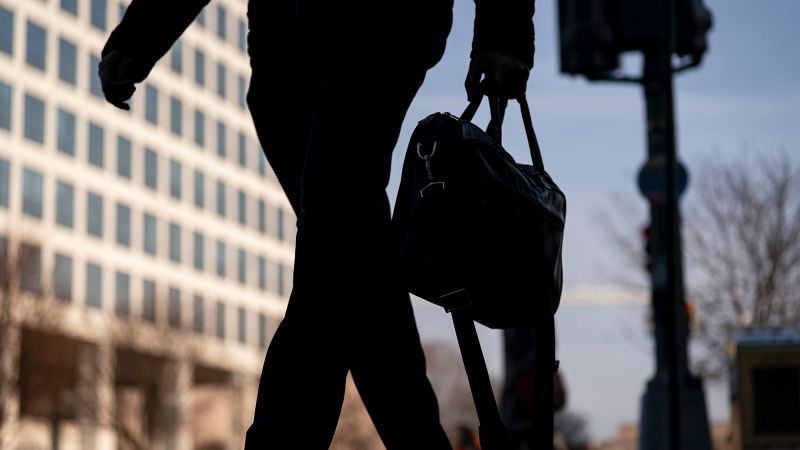CNN
—
Not since the early weeks of the pandemic have Americans been this certain that unemployment will spike.
Consumers surveyed by the Federal Reserve Bank of New York in March put a 44% probability on the nation’s jobless rate being higher a year later, marking the highest level since April 2020.
The New York Fed’s latest Survey of Consumer Expectations data released Monday added more glum outlooks to the growing pile of sour sentiment readings from Americans at a time when unpredictable federal policies have caused uncertainty and recession fears to spike.
The March survey also showed that people are growing increasingly insecure about their own job security: The mean perceived probability of losing one’s job in the next year rose to 15.7%, a 12-month high.
Despite a slew of downbeat sentiment surveys (considered “soft” data because of their subjectivity), the “hard,” more definitive and objective data continues to show resilience in the broader economy.
Through March, the US job market remained on solid footing, continuing a more than four-year streak of employment gains. The labor market has helped provide the foundation for strong consumer spending and continued economic growth.
Still, there’s increasing concern about the extent to which the increasingly pessimistic outlooks could cause people to pull back on spending, which in turn could result in declines in business investments and slowdown in the overall economy.
The closely watched New York Fed survey also showed a sharp increase in respondents’ near-term inflation expectations. Those jumped 0.5 percentage point to 3.6% — the highest reading in a year and a half.
Economists have cautioned that President Donald Trump’s aggressive tariff policy and the escalating trade war could result in higher prices for consumers and potentially cause inflation to reaccelerate.
Still, Monday’s survey showed that the year-ahead fears aren’t necessarily spilling into the long term. Inflation expectations held steady at 3% at the three-year-ahead horizon and ticked down by 0.1 percentage point to 2.9% at the five-year mark.
The Federal Reserve closely monitors gauges of near-, medium- and long-term inflation expectations as those could be self-fulfilling prophecies for consumers: If people think prices will be higher in the future, they might spend more now or even demand higher wages. In turn, businesses faced with higher costs might end up raising prices as a result.

